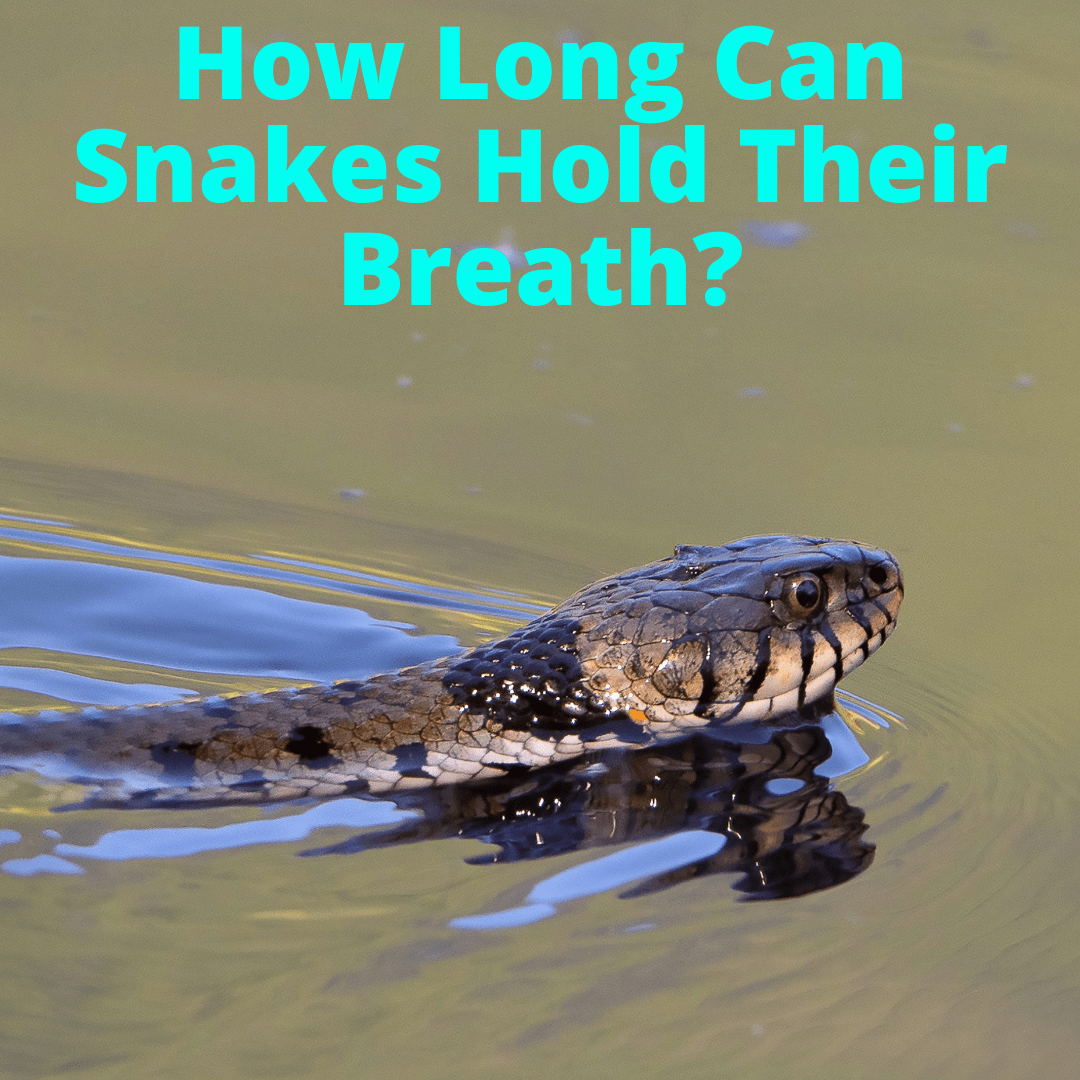
Perhaps you’ve noticed your pet snake stops breathing for extended periods.
Or you’ve see videos of sea snakes dive to depths well over 100 feet and spend over an hour underwater.
Or you’ve seen a snake take an hour to swallow a large meal that completely obstructs its mouth.
Do snakes even breathe at all?
Well, they do breathe. But some snakes can hold their breath for an incredibly long time, as you might already suspect.
Let’s dive right in and answer any questions you might have about how long snakes can hold their breath, and how they manage to pull it off.
Table of Contents
How Long Can Snakes Hold Their Breath?
Snakes can hold their breath for a surprisingly long amount of time, varying from 10 minutes to almost 2 hours. It depends on the type of snake and, surprisingly, its mood.
It also comes down to the typical environment a snake has evolved to live in, as well as its physical features like how many lungs its species has and the type of blood vessels it has around its nose.
Don’t worry, we’ll explain everything below.
What Does ‘Holding Breath’ Mean For A Snake?
Understanding how snakes breathe is essential for understanding how they hold their breath.
In some ways, the snake respiratory system is similar to our own. But in other ways, it is completely alien.
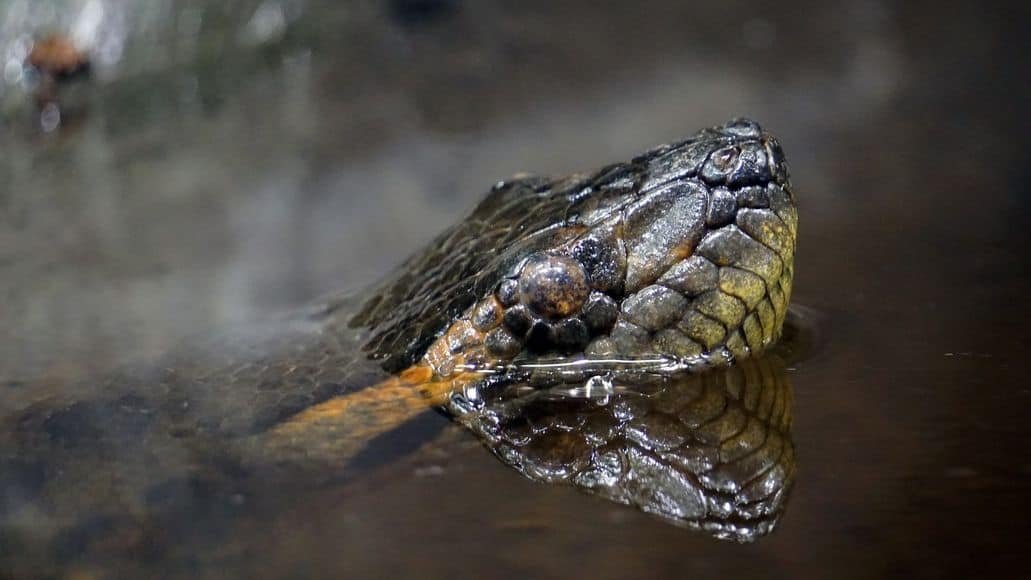
Like us, snakes have nostrils, a windpipe, and lungs. But their windpipes aren’t always open like ours are.
The opening of the windpipe, called a ‘glottis,’ lies just under a snake’s long, forked tongue. It has a small piece of cartilage that covers it unless the snake is inhaling or exhaling. It is also used for snake hissing.
Because of this, it’s more or less the default for a snake to be holding its breath. This type of respiration called ‘intermittent breathing.’
One more piece of the puzzle is that snakes don’t have a diaphragm, i.e., muscles used just for breathing. Instead, they move their entire rib cage inwards and outwards, to draw in air or push it out.
The pauses in between breaths are called ‘apnea’ and can last a very long time in snakes. I’ve had the misfortune of sleeping near a human that has sleep apnea, but with snakes, it’s completely natural.
How Long Can Different Types Of Snakes Hold Their Breath?
As mentioned above, different types of snakes can hold their breath for different amounts of time. The environment of a snake makes a large difference, but there is some variation even beyond this.
For instance, anacondas, which spend a lot of time hunting and swimming in water, can only hold their breath for about 10 minutes.
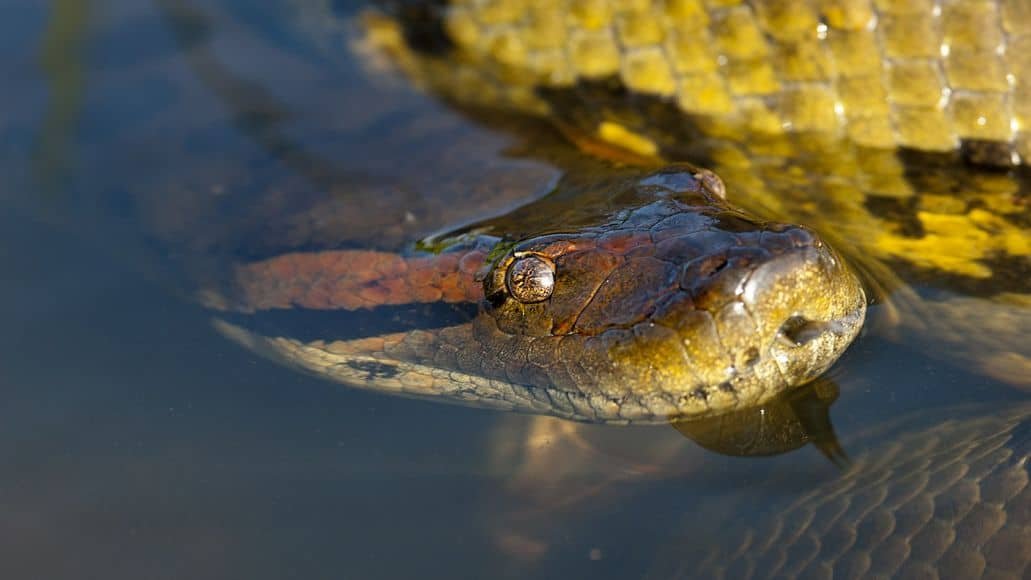
Burmese pythons, for whom swimming is less essential, are able to go up to 30 minutes in between breaths. Ball pythons, on the other hand, can only hold their breath for about 20 minutes.
All of these times pale in comparison to sea snakes, whose primary habitat is the water. Some species of sea snakes, like the sea krait family, spend about 80 percent of their lives underwater.
In one dive, sea kraits can stay underwater for over two hours, hunting for eels and other prey, which they bite and eat underwater. They can swim down to depths of over 200 feet. When they resurface after all this time, they only need to breathe fresh air for 45 seconds before they can do it all over again.
How Can Sea Snakes Hold Their Breath For So Long?
I hate to tell this, but it might actually be through cheating. Some scientists have found that an interesting quirk of water snake physiology might explain how they can stay underwater for so long without coming up for breath.
Compared to other snakes, certain species of sea snakes have a large amount of very small blood vessels just beneath the skin of their head.
These blood vessels contain blood that doesn’t have much oxygen in it, so they can pull oxygen from the water through the skin. They work in a similar way to fishes’ gills, allowing them to breathe underwater.
This interesting feature doesn’t provide enough oxygen to live underwater all of the time. That’s why they still need to come up to breathe air every so often.
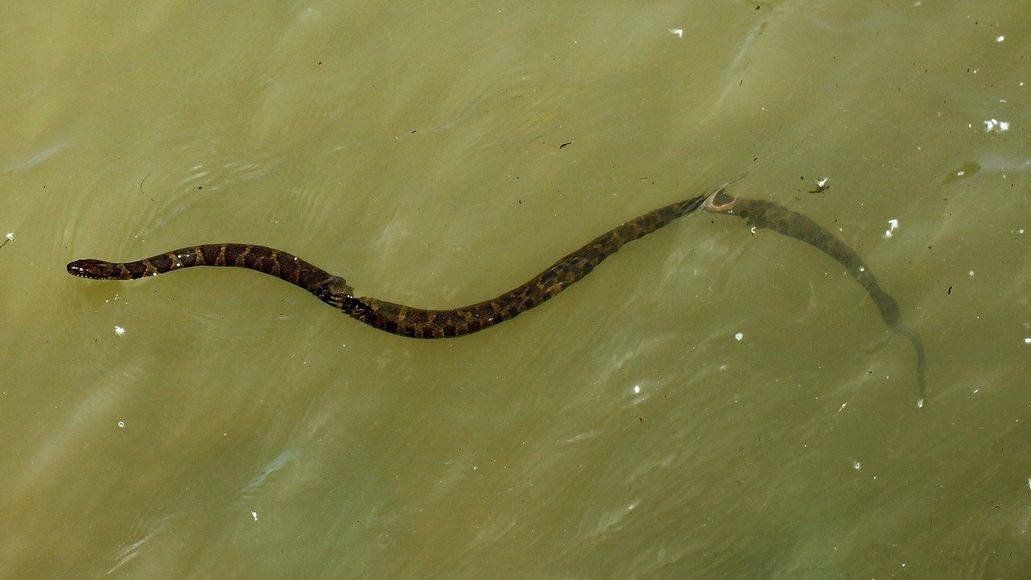
However, the extra little bit of oxygen helps them stay underwater for an extended time before they need to surface.
Factors That Affect How Long A Snake Can Hold Its Breath
We know that different species of snakes can hold their breath for varying lengths of time. But what exactly affects the amount of time that an individual snake can hold its breath?
At one moment, the same snake might be able to hold its breath for longer than at another moment.
As cold-blooded reptiles that can’t regulate their blood pressure, snakes are very responsive to their environment.
One study found that snakes will hold their breath less in high-temperature environments and breathe less when it’s cold.
The same study also found that when there’s more carbon dioxide in the air, snakes will breathe more frequently to compensate.
Another factor is the comfort of the animal. A snake that’s relaxed will have longer periods of apnea because other features of the snake’s body will be functioning less intensely. Its heartbeat and metabolism will go down and thus require less oxygen.
Related Questions
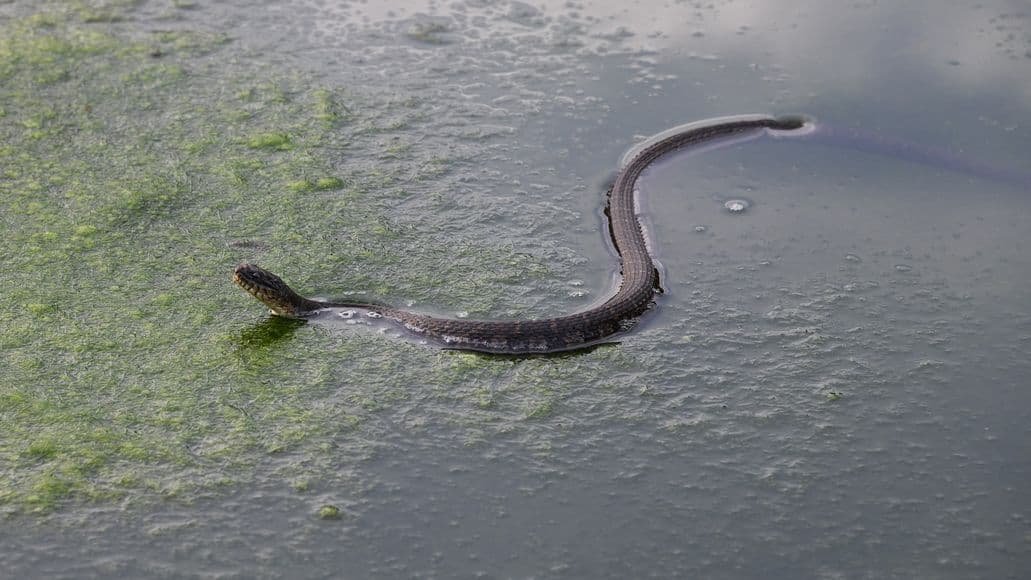
Here are some additional questions you might have about snakes holding their breath.
Do Snakes Hold Their Breath While They Eat?
Many people wonder: if a snake eats its prey whole and they breathe through their mouths, do they always hold their breath while eating?
The answer is: not completely. Since swallowing an animal whole requires a lot of muscular effort, a snake does need to breathe throughout the process.
But their mouths are still stuffed full—so how do they breathe?
Well, there’s one more odd bit of snake anatomy we haven’t gotten into; they can move the inside of their mouth to the side. This, in effect, moves the opening of the windpipe to a position where it’s unobstructed, meaning the snake has no problem breathing while eating.
Why Is My Pet Snake Staying In Its Water Bowl?
You might wonder whether your pet snake is holding its breath in the water bowl. Staying in the water bowl is a completely normal snake behavior and actually unrelated to the question of how long snakes can hold their breath.
It’s related to the process of shedding. When snakes are getting rid of a layer of skin, they need more water than they usually do. They might be holding their breath while in there, but that’s normal behavior—as we’ve seen.
Do Snakes Breathe The Same Way We Do?
Snakes basically breathe just like we do, except most snakes have only one lung. Do snakes give off carbon dioxide and take in oxygen? Yes, they do. In that way, they are just like us.
Snakes Holding Their Breath: Final Thoughts
Some snakes can hold their breath for an incredibly long time. Up to two hours. Others are not quite so impressive. But every snake can hold its breath longer than we can.
How long they can hold their breath differs not only among species but varies greatly even for one individual snake. If it is warm, it needs to breathe more often than it does if it is cold.
Leave a Reply